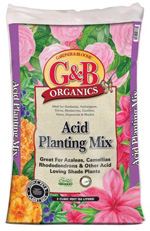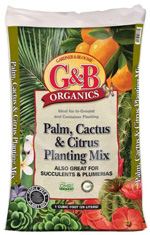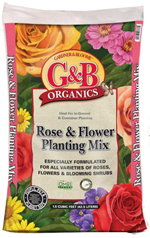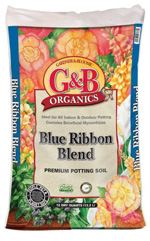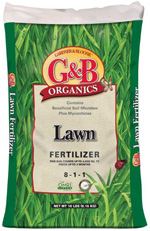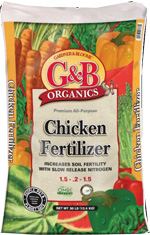|

|
 |
Featured Quote: "A man should never plant a garden larger than his wife can take care of." |
 |
|
Autumn is a good time to prepare your lawn for the year ahead, and the best time to tackle any long-term improvements. Tasks such as raking out lawn debris, feeding, and aerating will improve the quality of your lawn greatly if carried out on a yearly basis. Under some conditions, grass clippings and debris can form a thick "thatch" on the surface of your lawn. This affects growth of the grass and should be removed with a lawn rake. If grass growth is poor, aerate the lawn. You can do this by pushing the prongs of a fork about 15 cm (6 in) into the ground. Brush a soil improver into the holes made by the fork. Use a soil penetrant to open up the soil to receive water like PenMax Plus. Alternatively, use peat, a peat-substitute or very fine, well-rotted compost if the ground is sandy. Reseed as necessary; fall is an excellent time for reseeding. If your lawn is in poor condition and needs reviving, apply an autumn lawn feed. It is essential that you use one formulated for autumn use, as spring and summer feeds will contain too much nitrogen. Use one recommended for autumn use; the mixture known as lawn sand, contains too much nitrogen. You can (and should) tidy an uneven edge whenever it's necessary, but doing a full job of it in autumn will relieve the pressure at busier times of the year. Hold a half-moon edger against a board held in position with your feet. |

|
One of the challenges many gardeners face is how to add texture and interest to the landscape. One of the best ways to do this is by adding ornamental grasses to your garden. They have a natural fountainous growing habit and many produce beautiful flower blooms that will light up any garden. Ornamental grasses are incredibly low maintenance, grow quickly, and are naturally disease and insect resistant. Add to that, their natural swaying movement in even the slightest of breezes and you have plants that add unparalleled beauty to any garden setting. Another great feature of ornamental grasses is the fact that they come in a wide variety of shapes, sizes and color. There are many grasses that are perfect for creating borders and others that provide a nice backdrop to other plants or look perfect as individual featured specimens. The colors range from gold, green, silver and blue to shades of purple, burgundy, red and orange. While most ornamental grasses prefer moist soil conditions, most become quite drought tolerant once established. They require very little fertilization and can get by with a single feeding of plant food per year. Most shorter varieties require no pruning at all (short of removing any spent flowers) and the only maintenance taller varieties require is a crew cut in late winter (down to 4-6" inches above ground level) to encourage new growth in spring. We have a great selection of ornamental grasses just waiting for an opportunity to add interest and beauty to your garden. Click to print this article. |

|
One of fall's most important and exciting jobs is to start buying and planting spring-flowering bulbs. Bulbs are easy plants to grow. They have a mystique bordering on the miraculous, but growing them here in Southern California is different from growing them in the East or Midwest. Many bulbs need to undergo a cold winter in order to bloom; here in California, we can give them the chill they need by placing these types in the vegetable drawer for a period of about 6-8 weeks prior to planting. These bulbs should generally not be left in the ground when the foliage has died down after they bloom. They should be lifted and stored in a cool, well-aired area (keeping them in a brown paper bag is a good idea), then re-refrigerated once again 6-8 weeks prior to planting the following spring. There are several types of bulbs that can be naturalized (left in the ground) and will bloom reliably each spring without any winter chill at all. Many of these are drought resistant, and are unbelievably easy to grow. BUY BULBS NOW TO PLANT LATER Bulb season is short and garden centers generally order a finite amount of stock, so begin purchasing spring-flowering bulbs as soon as possible. They soon get picked over and sometimes get put back in the wrong bins. Do your research on the more exotic bulbs; some are not suited to our temperate climate. Choose the largest and fattest bulbs (because they produce the biggest blooms) and make sure the bulb is firm and not spongy. Make sure you label each bag with the type of bulb, its color and its recommended planting depth and spacing. Bulbs to naturalize Among the best bulbs to naturalize in California are daffodils (Narcissus), Dutch iris, grape hyacinth (Muscari), Freesia, Sparaxis, Ixia, Watsonia, Lycoris and Crocosmia. Included in the Narcissus family are the popular paperwhites; they will be the first to bloom in this group and are prized for their heady fragrance. Dutch iris and Freesia make wonderful cut flowers. Daffodils can also be used for bouquets, but if you plan to use them in a mixed arrangement with other flowers, their stems must be seared with an open flame after cutting - the sap in the plant will cause the other flowers to wilt quickly. If you have a gopher problem however, daffodils are a great choice; because they are poisonous, gophers will not eat them (unlike tulips, which they love). When planting these types of bulbs, it is best not to be too precise in their placement - this will give a much more natural, much less contrived look to the planting area. A good method for placement is to take a handful of bulbs and gently toss them - where they land is where they will be planted. Eventually (usually in about 3-4 years), the bulbs will become overcrowded and their blooms will decline. When this happens, it is time to divide the clump and replant the bulbs; you will probably have quite a few to share with family and friends! Bulbs that require pre-chilling and lifting Tulips and hyacinths require much more winter chill than we receive in California. For this reason, they must be chilled in the vegetable drawer in the refrigerator before planting, as noted above. What will happen if you skip this step? If they bloom at all, the flowers will be born on very short stems. This isn't very attractive when it comes to the tulips or hyacinths. After the foliage has all turned brown (never cut off green foliage on a bulb - it is through the foliage that it gets the necessary nutrients to bloom the following year), the bulbs must then be dug up and stored as detailed above. While they may sprout and bloom the following year if left in the ground, they will not be as vigorous or as floriferous and eventually they will decline completely. They also may rot due to overwatering during their dormant state, when they have no means to use water; this is a particular problem in beds with other plants that must be watered over the summer. Bulbs that can be planted without pre-chilling, but won't naturalize well Ranunculus and anemones do not need pre-chilling, but it is best if they are lifted (after the foliage has withered and died), stored in a well-aired place and replanted each spring. Like tulips, hyacinths and crocus, they tend to decline each year when left in the ground. They should not be eliminated from the bulb garden because of this, though. They put on such a beautiful display that, even if you treated them as an annual, it would be worth it. Both ranunculus and anemones make great cut flowers. Buy early, wait a bit to plant Even though it will be tempting to plant your little beauties as soon as you return from the garden center, we strongly advise you wait a little longer before planting them. They will perform much better if you plant them in mid- to late October, when the daytime temperatures have cooled down and the nights are crisp and fresh. For the time being, keep them in brown paper bags in the garage; you can congratulate yourself on the fact that you "beat the crowd" to the garden center and were able to select all the colors and types you really wanted! |
 |
|
What does the term deciduous mean?
Answer:
Any plant or tree that loses all of its leaves and goes into a state of dormancy (sleep) periodically is considered deciduous. Most shade trees and many fruit trees fall into this classification, along with plants like forsythia, hydrangeas, potentilla, roses, spirea, weigela and many others. |

| What You'll Need:
Step by Step:
Yield: 6 servings |
 click here for a printer friendly version of this page
click here for a printer friendly version of this page |
Written content © 2004-2014 Garden Partners LLC, or respective authors. All Rights Reserved. Privacy Policy. All written content contained in this site is protected by United States copyright law and may not be reproduced, distributed, transmitted, displayed, published, or broadcast without prior written permission of Garden Partners, LLC. You may not alter or remove any trademark, copyright or other notice from copies of the content. Would you like a newsletter like this for your nursery or garden center? Please feel free to look at what we have to offer and contact us for your garden center marketing solutions. |




